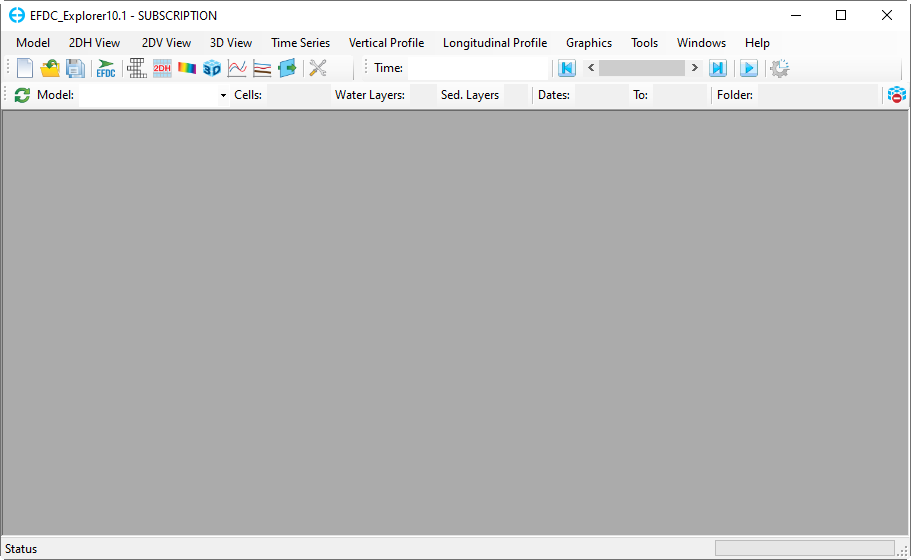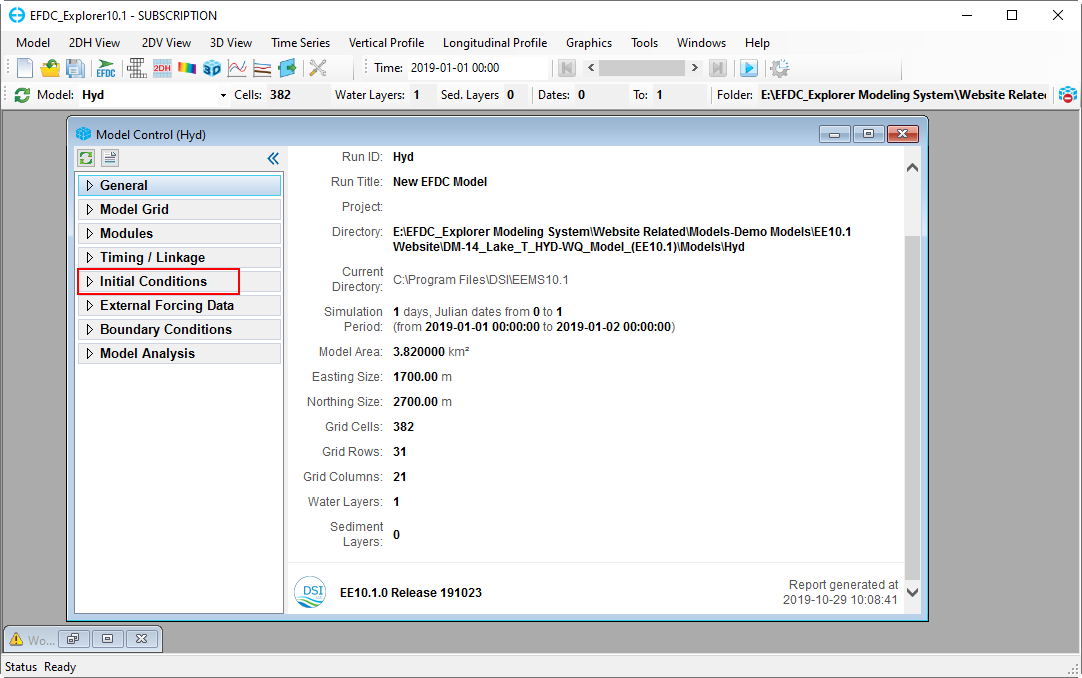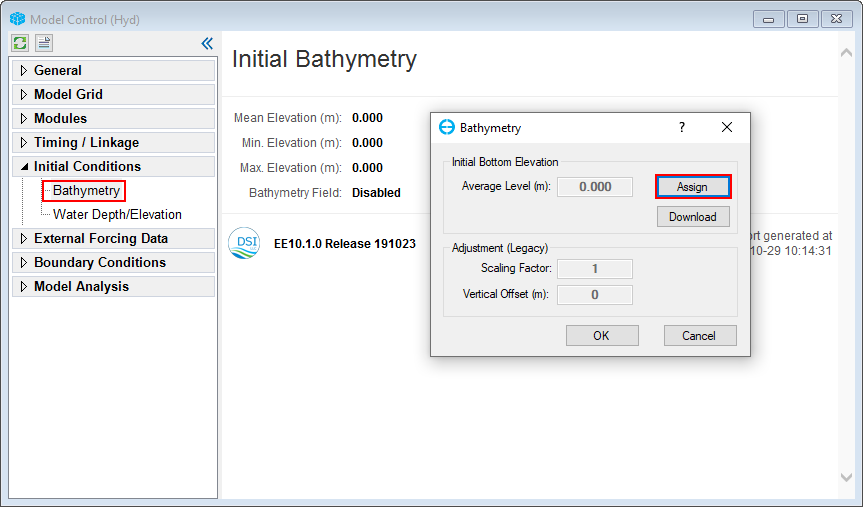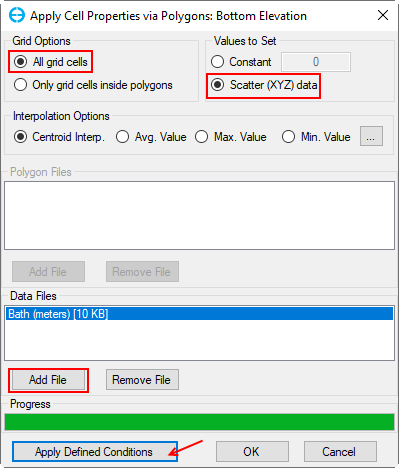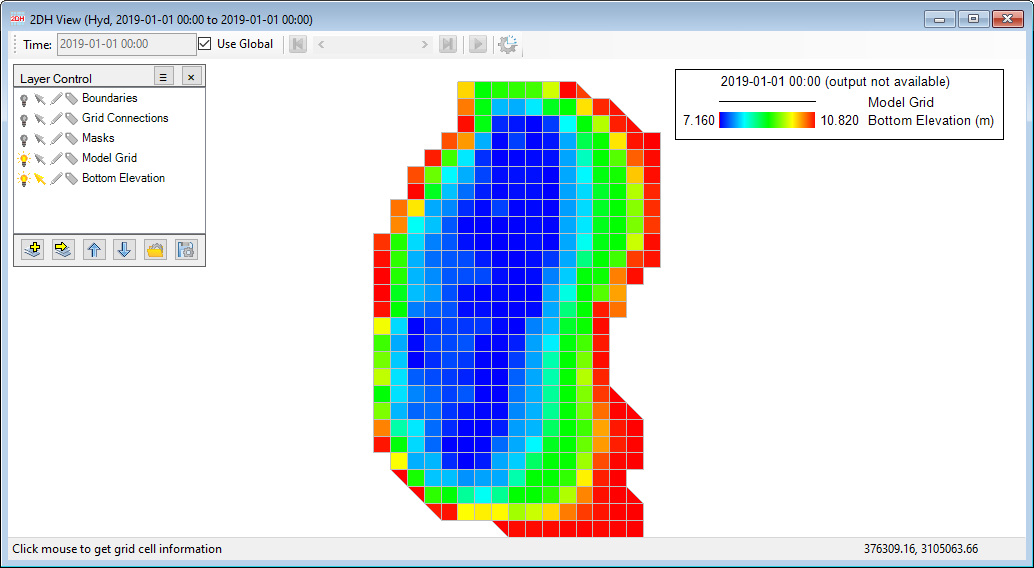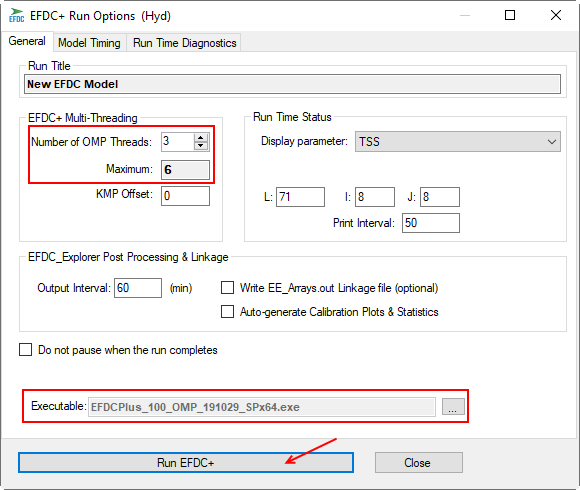1 Introduction
This tutorial will guide the user in on how to set up a 2D lake hydrodynamic model and run a solution for EFDC. It will cover the preparation of the necessary input files for the EFDC model and the visualization of the output by using the the EFDC_+ Explorer (EE) Software.
The data used for this tutorial are from Hillsborough Water Atlas, Lake Thonotasassa, Florida, USA. All files for this tutorial are contained in the Demonstration Models of the Resources page folder file (DM-14_Lake_T_HYD-WQ_Model).
Before beginning the first session, let us first introduce the main form of the EE GUI in order to better understand our explanations in this document. Figure 1-1 is the main form of of EFDC_+ Explorer or EE User Interface.
| Anchor | ||||
|---|---|---|---|---|
|
Figure 1-1. EFDC_+ Explorer main main form.
2 Create a New Grid
This session will guide you to create a new simple grid with EFDC_+ Explorer.
Lake Thonotosassa is located in Hillsborough County, Florida, USA, and has been chosen as an example of where to build a 2D model in EE
...
4. RMC (Right Mouse Click) on the Bounding Polygons blank to open a pop-up menu. In the pop-up menu, select Add Files to browse the polygon file. The land-boundary of the lake will be loaded here.
| Info |
|---|
The polygon file for this model is "Outline.p2d" and can be found in Data/Bathymetry folder of the Demonstration Models provided above. |
| Anchor | ||||
|---|---|---|---|---|
|
Figure 2-2. Add polygon file
...
3 Assigning the Initial Conditions
This section will guide you on how to assign the initial conditions such as the bathymetry, water level, and bottom roughness.
Figure 3‑1. Assigning initial conditions.
3.1 Assigning the Initial Bathymetry
1. Select the Initial Conditions tab and right mouse click (RMC) on the Bathymetry sub-tab. A new Bathymetry form will appear. In that form, click on Assign to define bathymetric value.
Figure 3‑2. Assigning bathymetry conditions.
2. The area the user wants to assign the bathymetry data to is set by a poly file. In this case, choose All grid cells
3. The data for bathymetry values are assigned by “Bathymetry.dat” file in Bathymetry folder . This bathymetry file is simply an xyz format.
4. Choose Scatter (XYZ) data and then Add file to browse for “Bathymetry.dat”.
Figure 3‑3. Assigning bathymetry.
5. After adding the data file, click to the Apply Defined Conditions button to make your changes take effect before selecting the OK button.
Figure 3‑4. 2DH View of bottom elevation after assigning bathymetry.
...
3. Enable Edit grid by turn on the icon (see Figure 4‑7)
4. RMC on the inflow location cell and select Add New Boundary Group (Figure 4‑8)
Anchor Figure 4-7 Figure 4-7
...
5. Enter the Boundary Group Name by typing “Inflow” and select boundary types (Figure 4‑9). Then click OK button, the Flow Boundary Conditions form appears, in the Forcing Assignment frame, select "Inflow" for Flow Table (Figure 4-103407876), then click OK button.
| Anchor | ||||
|---|---|---|---|---|
|
...
6. Apply the same process for assigning the outflow boundary cell. Figure 4‑11 presents the boundary conditions after assigning the inflow and outflow boundaries.
...
3. Enter the Time of Start, Number of Reference Periods, Duration of Reference Periods and Time Step as Figure 5-1 3407876. These values are explained in Table 2 of Build a 2D Lake Model with EE8.
...
4. RMC on Linkage button and set Link EFDC Results to to EFDC_+ Explorer and set Linkage Output Frequency to 60 minutes. This means that EFDC will record the output every 60 minutes for the display of the model results in the EE. (Figure 5‑2). Note that a smaller output frequency will create a larger output file.
...
3. Enter values for the Dry Depth and the Wet Depth. Then click OK button. Note that the wet depth should always greater than the dry depth. (Figure 6‑1).
| Anchor | ||||
|---|---|---|---|---|
|
...
4. Return to select Model Grid tab, RMC on Grid sub-tab and enter the number of vertical layers required into the box. In this case, we will set the vertical layers equal to 5 (Figure 6‑2). Click OK button.
5. Save the model.
...
3. Click the Run EFDC+ button to run the model (Figure 7‑2).
Figure 7‑2. Browse to the EFDC+ executable file.
...
If all settings are correct, the model will start running and you will see the MS-DOS Window appear showing the model results as shown in Figure 7‑3
| Info |
|---|
Note that you can press any characters on the keyboard to pause the simulation and check the model results. If you want to exit the simulation hit the same key again, if you want to continue run then hit any other key. |
...
This session will teach you how to view the model simulation results. In general, selecting these three icons on EE’s main form (Figure 1‑1) to view the model simulation results in 2DH View, 2DV View or 3D View, respectively.
...
2. In View Layer Control, select Add a New EFDC View Layer (Figure 8-13407876). The user should see View Options window with Primary Group and Parameter to display.
3. Figure 8‑2 is an example of showing the vector and magnitude velocity field results. Similarly, the user can select other parameters to show the model results.
4. Right mouse-click on the Velocity vector layer to modify vector arrow sample or change vector color and scale factor (See Figure 8-2 3407876)
| Anchor | ||||
|---|---|---|---|---|
|
...
